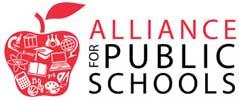It’s graduation season- that time of year when families gather to celebrate the academic accomplishments and the rite of passage of achieving a major milestone. However, high school graduation is important to the entire community not just the student and their family. High school graduation rates have significant implications for both individuals and society at large.
The Value of a Diploma
Graduating from high school opens up better job opportunities leading to personal financial stability and overall economic growth. On average, high school graduates earn more than those who drop out. A brief from UCLA showed that a high school diploma “yields the benefit of $480,000 per high school graduate over a lifetime.” A higher graduation rate translates to a more skilled workforce. This attracts businesses and encourages job creation. Projections indicate that raising the graduation rate would result in 54,000 new jobs.
High school graduates tend to spend more on goods and services. Increased spending stimulates local economies. Additionally, graduates are more likely to invest in assets such as homes, stocks, and retirement accounts. They also, on average, earn more and pay higher taxes. As more students graduate, state tax revenues increase and the drain on social services decreases. Individuals who don’t complete high school are more likely to rely on social safety nets, such as welfare programs and healthcare services. By improving graduation rates, we reduce the strain on public resources and enhance overall economic stability.
National Average
According to US News and World Report, “The average state graduation rate across 49 U.S. states and Washington, D.C.(recent data was not available for Oklahoma) was 79% for the 2021-2022 academic year, up two percentage points from the year prior.” This positive trend reflects efforts to improve graduation outcomes across the nation by groups like America’s Promise Alliance and the Alliance for Public Schools through our GradNation and Student Alliance work. Florida’s 2022-2023 4 year graduation rate was 88%. Virginia, New Jersey, and Massachusettes had the highest graduation rates at or above 90%.
Improving Outcomes
A combination of policies and strategies can improve graduation rates and increase academic outcomes for all students. The Alliance for Public Schools focuses on an early warning system of the ABC’s- attendance, behavior, and course progression. Monitoring students who are at risk of falling behind when they enter 9th grade allows for proactive interventions which can prevent students from disengaging and improve their chances of achieving a diploma. Engaging students in classes, extra-curriculars, and programs motivate students to stay in school.
Alliance for Public Schools’ programs provide personalized, peer-led support to students who face challenges in one or more of the early warning indicators. These supports may include academic tutoring, mentoring, and access to mental health resources. They enhance students’ capacity to manage challenges both in and out of school and create supportive relationships and feelings of connectedness.
As we celebrate this year’s graduates, we must remain focused on improving academic outcomes for their younger peers. By addressing disparities and providing targeted support, we can continue to raise the bar for educational achievement. Investing in education and improving high school graduation rates benefits individuals, communities, and the economy at large. It’s not just about diplomas; it’s about building a stronger, more prosperous society.
To learn more about bringing Alliance programs to your school or district, reach out to us at info@all4schools.org.







